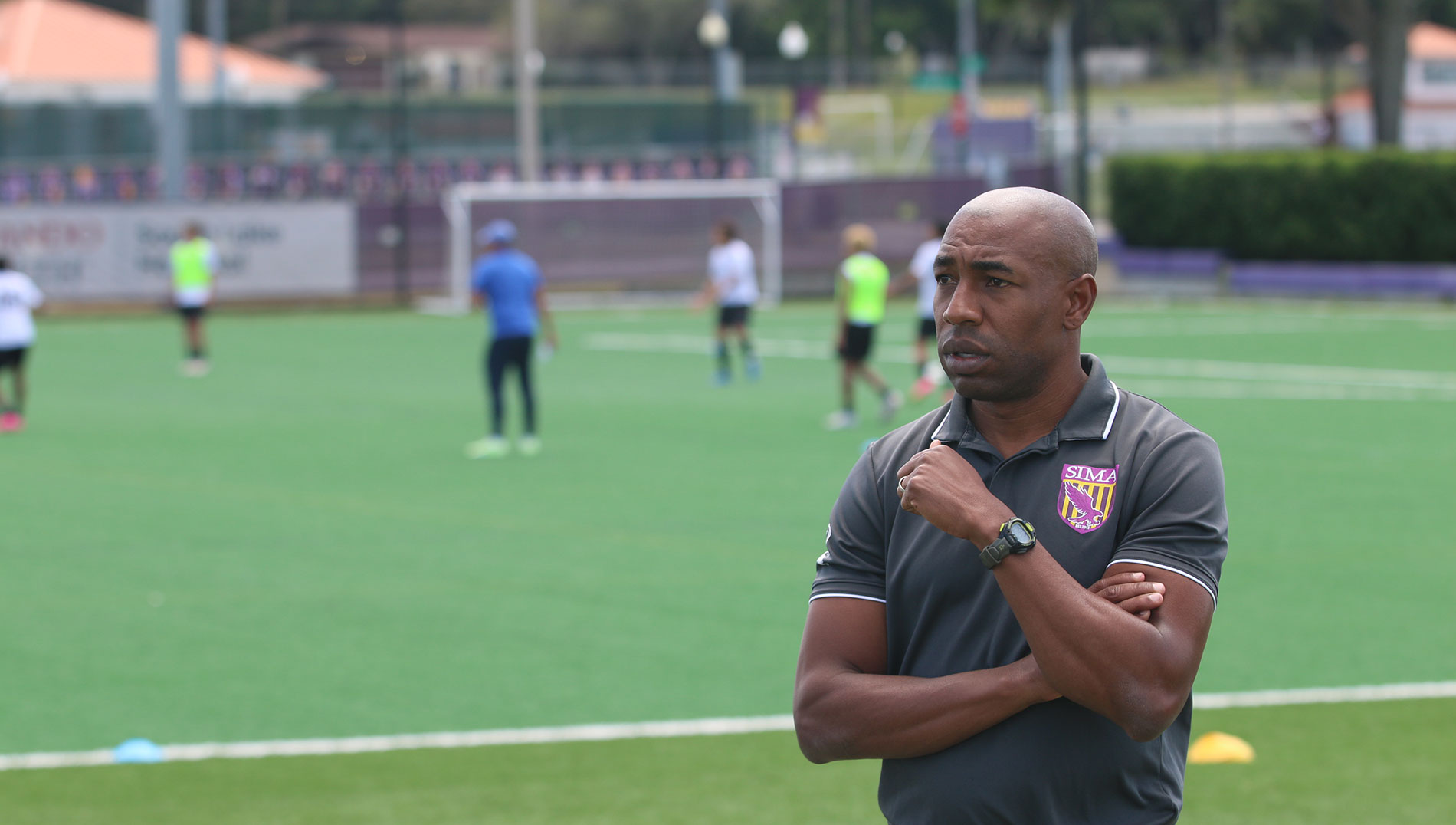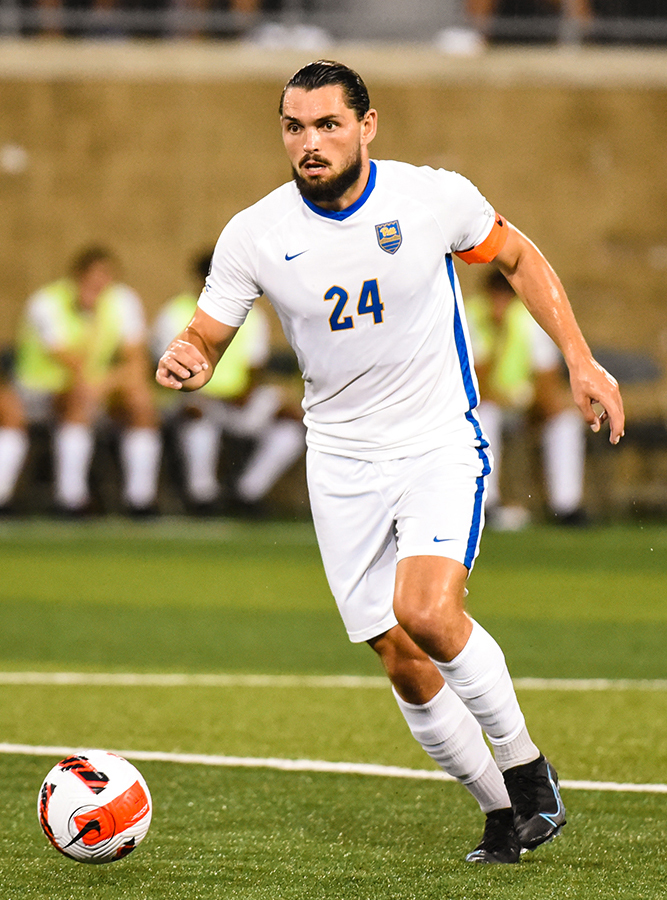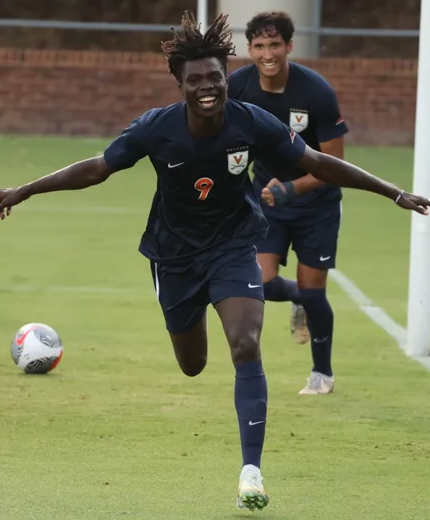Q&A With SIMA Director Kevin Varnado

The Soccer Institute at Montverde Academy (SIMA) is considered one of the leading soccer academies in the United States. Between receiving an outstanding education through Montverde Academy's rigorous education curriculum and a top level soccer experience from its renowned coaching staff, students in the SIMA program get the best of both worlds, all while attending it on picturesque campus in the backdrop of Lake Florence.
Recently, Montverde Academy Sports Media II student Taylor Deaver sat down with SIMA Director Kevin Varnado to talk about what is it about SIMA that makes it stand out from the rest of the bunch.
TD: What distinguishes SIMA from other soccer academies or programs?
KV: The SIMA program was initially founded as a way to help young men prepare for the demands, the rigors of college soccer. Montverde Academy views themselves itself as a college preparatory school and as an extension of that the SIMA program focuses on helping young men prepare to compete at the collegiate level. I believe that the main thing that makes us unique is our holistic approach to growing and developing the young men that are in our program. Because we are housed within a school setting we are able to focus on the academic, athletic, social, and emotional - of the components when you're looking at a young person and how they're looking to grow and evolve. We are able to use the support and infrastructure offered by the school along with our expertise in a sporting sense and coaching standpoint to really help these young men grow and mature before they depart Montverde Academy.
TD: Could you elaborate on the training methodology employed within the SIMA program?
KV: So a few years back, we were fortunate to have one of our colleagues who was a former director of methodology at a professional club in Spain. He brought his experience and his knowledge and helped us develop our own methodology. We always had an identity of how we wanted to play as a program and the types of players that want to try to develop. But he was able to help us really align our methodology and our curriculum to intentionally grow each of these young men in a variety of different aspects within the sport of soccer.
TD: How does SIMA integrate academics into its program, and what support systems are in place for student-athletes?
KV: We have access to the school's learning management system, Canvas. Each coach has access to the Grade Guardian feature which allows us to track the progress of the students in their respective classes. We have really good relationships with the other faculty on campus. If there are students who may need additional support or a little bit more guidance in the classroom, there are school counselors that we also work very close with. We have our boarding component, so we have some young men away from home so there is an adjustment and adaptation that at times impacts their ability to perform in the classroom and on the field. As we are examining the collective individual, I think all these support systems are what allows us to have the impact we do on these young men in the classroom, on the field, and overall.
TD: What opportunities are available for players within the SIMA program, both in terms of personal growth and advancement in their soccer careers?
KV: One of the things that we try to do is to create the most intensive and demanding environment that will ultimately help the young men grow. It's important for us to get them out of their comfort zone. When young people are comfortable, you often see growth straight away. We want to have an environment that is very demanding, that's very competitive. We believe that this is one of the keys for them to succeed at the collegiate level once they depart Montverde Academy. Within our methodology, one of the things that is very important for us in terms of that competitive setting, is the ability to progress within SIMA. Our teams structured in a way that players have the ability to progress and "graduate" from one team to the next team as they look to elevate themselves on the field as a player. I think that's one aspect that make us unique for sure. Other programs typically keep the same team from the start to end of the year but for us we really want to encourage growth, we want to foster development. Once it's clear that a young man has outgrown his group or team, we look to elevate him to the next team for the next challenge.
TD: How does the SIMA program enhance the recruitment prospects of its athletes for college soccer programs?
KV: SIMA has developed a bit of a reputation within the recruiting landscape. We've had a number of alumni who have gone on and had a great deal of success at the collegiate level. That reputation allows us to do some things that are unique for sure. We have two signature events we host on campus. Our SIMA College Showcase in November and the SIMA Friendlies in January offer an increased level of exposure for the members of our SIMA program. These events, combined with the reputation make it very difficult for another school or another program to offer a similar level of exposure.
TD: Can you provide examples of how SIMA alumni have impacted college soccer programs across the country?
KV: We have lots of different examples of young men that have passed through these doors here at Montverde Academy and the SIMA program, and have gone on to have considerable success at the collegiate level. I think this year, for sure, is really unique and was one that we probably didn't anticipate. Clemson University captured the 2024 Division I National Championship at this year's College Cup, where we had four young men that were on in that team. All four young men that were named to the All- Tournament team. We had two young men that were named most outstanding offensive and most outstanding defensive player at the College Cup. And then the one young man, Ousmane Sylla '20, was named the Hermann trophy winner, which is presented to arguably the best player in all of college soccer. It's pretty unique to have that many young men from one program have such an impact on one collegiate program that went on to have a great deal of success at the collegiate level. There are other examples as well. Stephen Annor (right) had a great season at the University of Virginia and was awarded a Generation Adidas contract with Major League Soccer. We've had other examples in previous years of young men that have gone on to have a considerable amount of success at their collegiate programs. That success can all be attributed to the work that we do here and helps build on that the reputation that I mentioned earlier that leads to some of that exposure for our current students to benefit from.
TD: How has the SIMA program contributed to the skill development of players transitioning to college soccer?
KV: Going back to the environment that I touched on earlier, I think we are intentional about understanding what succeeds at the collegiate level and imparting it upon the players that are in our summer program. We lean on our methodology, our curriculum, to mirror Montverde Academy's mission to prepare these young men and young women to be successful at the university level. The intention behind how we set up our teams. The integration of the teams and the progression that we look to encourage from the players.Their desire to compete amongst their peers is one of the reasons why I think they're able to develop that skill level to make that the successful transition to college soccer.
TD: How do student-athletes discover the SIMA program from other parts of the world? How do they come across SIMA?
KV: We recently completed a survey that asked that exact same question. One of the things that seemed to be a common thread is that a lot of people found out about SIMA from friends, colleagues, or through family members. Several students were introduced to SIMA via Montverde Academy through the school enrollment process. There are some different marketing and social media efforts that connect prospective families with Montverde Academy and SIMA, but the most common way is generally word of mouth from friends and family that have a relationship with Montverde Academy.
TD: What types of players do you typically look for and like what qualities makes SIMA players stand out?
KV: Good question. I would say that we want to work with players that are driven. We want players that are driven, motivated, and passionate. If that's the case, when they find themselves within this environment - that is quite difficult - they won't shrink from the competition. They're going to look to try to and embrace the opportunity that comes from the competition. Players that have that drive, passion and motivation are going to be really important. We want players that have aspirations of playing the game at a high level and I think if that's the case they know that this is just a stepping stone, a part of their journey.
Trending Videos
Headlines
- SIMA Recruiting Roundup: April 29-May 5
- How Do I Get Scouted by TopDrawerSoccer?
-
Texas & Oklahoma High School Round (...)

-
2024 Big West Women's Breakout Can (...)

-
Commitments: South Shore Selects

-
Get to Know Six U17 WNT Newcomers

- 2024 Women’s DI Recruiting Ranks: April
-
Midwest High School Roundup - May

- U17 WNT Kansas City Training Camp Roster
-
2024 Men's DI Recruiting Rankings: April



